Delving into the world of traditional craftsmanship, creating a willow lobster pot/ crab pot is a blend of skill and artistic expression. In this article, we will guide you through how to make a willow lobster pot, using only readily available tools and materials.
From the meticulous selection of materials to the intricate weaving techniques, we’ll navigate the journey together. Have a read!
1. How to make a willow lobster pot?
Creating a willow lobster/ crab pot involves traditional basket weaving techniques. Here’s a basic guide to get you started:
What do you need to make a crab pot?
- Willow branches (fresh or soaked for flexibility);
- Pruning shears or scissors;
- Wire or twine for securing.
Step by step:
Step 1: Selecting and preparing twigs
Begin by sorting through a diverse array of twigs, seeking those that are sufficiently long and straight. After sorting, identify twelve twigs approximately 150cm long. Despite being outdoors for several weeks since cutting, they retain reasonable pliability, a crucial factor.
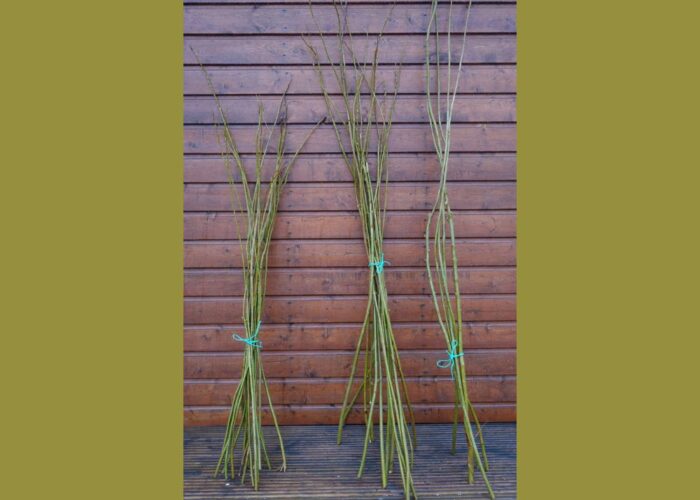
Step 2: Creating a weaving jig
Develop a jig to hold the rods in place during the initial stages of weaving. Explore online options, typically involving a wooden disc with holes attached to a pole with a stand. Use a ring cut from an old plastic lid to secure the ends, utilizing readily available items from the shed.
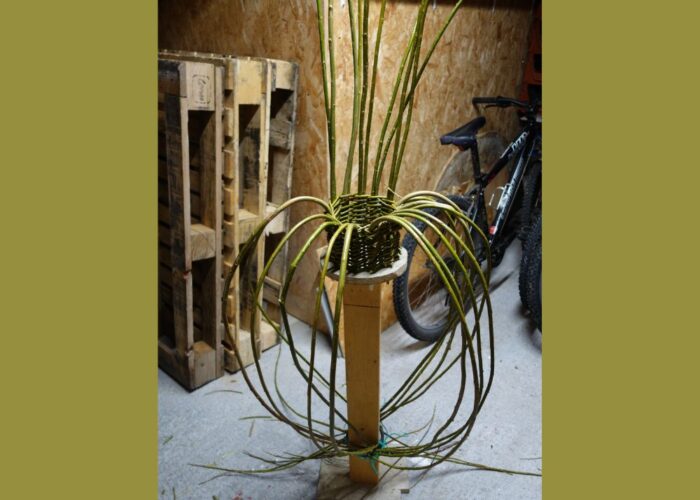
Step 3: Whittling and weaving
Whittle the ends of the rods and insert them into the holes at the jig’s top. Utilize slightly shorter wands to weave around twelve upright sticks, creating a basket-like structure. Cease when the height is just over a hand’s width.
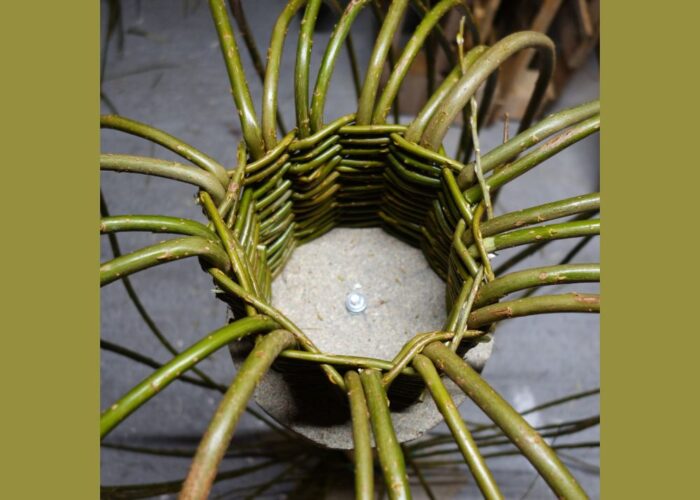
Step 4: Securing upright rods
Bend all upright rods back on themselves and secure them at the bottom of the stand. Use cords to tie things down, addressing any fiddly movements during this stage.
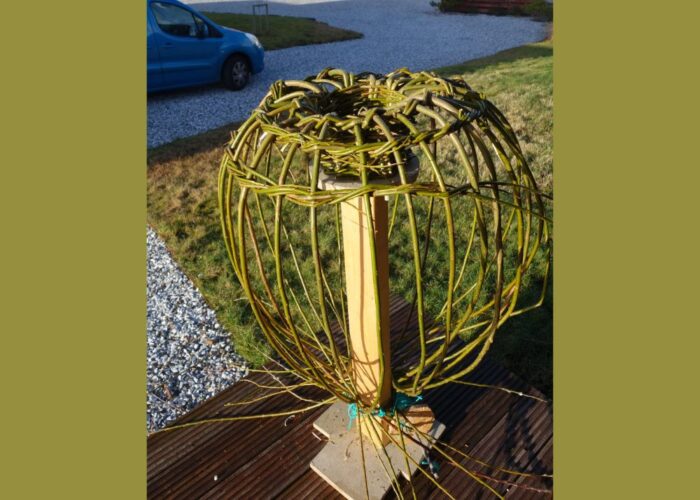
Step 5: Twisting willow wands
Begin twisting smaller, flexible willow wands in a spiral fashion from the edge of the aperture. Consider adding more rods by inserting them into the weaving to fill wider gaps, as twenty-four willow rods may be insufficient.
Step 6: Removing from jig
Carefully remove the partially made pot from the jig. In this case, hammer the rod ends underneath the disc to dislodge them from the holes, ensuring the pot retains its shape.
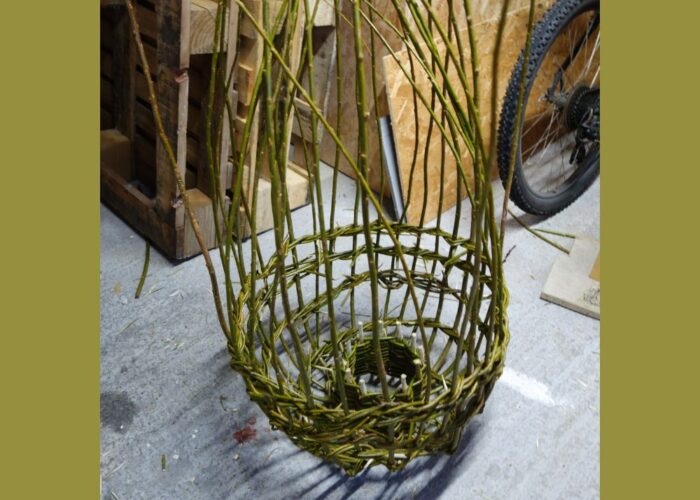
Step 7: Forming the base
Turn the pot upside down for stage seven, focusing on forming the base. Employ various techniques, such as systematically bending some rods across the middle and weaving ends outward in a spiral, adapting to your preferred method.
Step 8: Reinforcing the base
The last step involves fortifying the base, recognizing that this area withstands the most wear and tear, particularly with frequent use. For enhanced protection, encircle the bottom of the pot with a robust, intertwining rope crafted from willow wands.
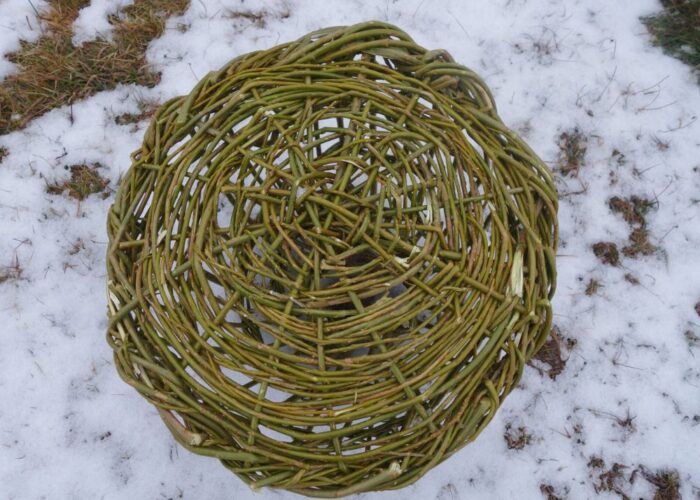
2. FAQs
2.1 How long do you leave lobster pots?
Lobster pots are typically left in the water for a duration ranging from 24 to 48 hours before retrieval.
2.2 How deep are lobster pots set?
Lobster pots are usually set at varying depths, typically ranging from 10 to 50 feet, depending on the local conditions, regulations, and the preferences of lobster fishermen.
2.3 What is the best bait for lobster traps?
The best bait for lobster traps often includes fresh fish, such as herring or mackerel, as well as other seafood like squid or salted fish. The choice may vary based on regional preferences and local availability.
3. Final thought
Crafting a willow lobster pot is not merely a utilitarian endeavor but a celebration of tradition, skill, and artistry. From meticulously selecting and preparing the materials to employing intricate weaving techniques, each step in the process contributes to the creation of a functional yet beautiful piece.
By following the detailed guide provided, enthusiasts can embark on their own journey of craftsmanship, connecting with age-old techniques while imbuing your creations with personal flair.
If you have any further questions, don’t hesitate to send us an email us at info@thanhcongcraft.com or message us at WhatsApp: +84967485411. Hope to serve you soon! Best regard!


